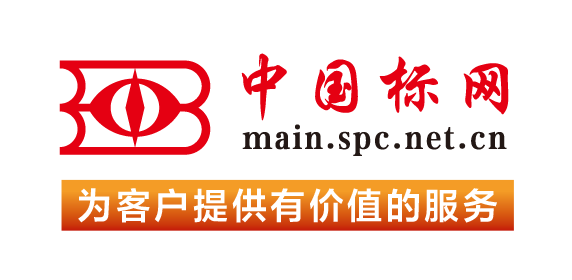【国外标准】 Standard Guide for Estimating Oil Spill Recovery System Effectiveness
本网站 发布时间:
2024-02-28
开通会员免费在线看70000余条国内标准,赠送文本下载次数,单本最低仅合13.3元!还可享标准出版进度查询、定制跟踪推送、标准查新等超多特权!
查看详情>>
适用范围:
This guide covers the key factors to consider in estimating the effectiveness of containment and recovery systems that may be used to assist in the control of oil spills on water. The purpose of this guide is to provide the user with information on assessing the effective use of spill-cleanup equipment. It is intended for use by those involved in planning for and responding to oil spills. In evaluating the effectiveness of containment and recovery systems used in response to oil spills, many factors need to be considered of which skimmer performance is but one. The objective of this guide is to describe a range of factors that must be considered in estimating recovery system effectiveness. Response strategies will depend to some extent on the type of spill. The spill scenario should be defined as to whether it is an instantaneous or continuous release, whether or not the spill has ceased flowing, and whether the spill is contained or uncontained. The following oil slick properties must be specified for the spill scenario: spill volume; area; slick thickness; slick viscosity; and emulsification.1.1 This guide covers the key factors to consider in estimating the effectiveness of containment and recovery systems that may be used to assist in the control of oil spills on water.1.2 The purpose of this guide is to provide the user with information on assessing the effective use of spill-cleanup equipment. It is intended for use by those involved in planning for and responding to oil spills.1.3 Sections of this guide describe calculation procedures for estimating recovery system effectiveness. It should be understood that any such calculations cannot be expected to predict system performance, but are intended to provide a common basis for comparing system performance.1.4 One of the main reasons that the calculation procedures cannot be used to predict system performance is that the analysis is sensitive to assumptions made on the properties of the oil slick, and particularly the changes in slick thickness and emulsification. It is emphasized that the purpose of this guide is not to provide a standard method for estimating slick property changes, but rather to provide a standard guide for using that information in comparing system performance.1.5 Consideration should be given to alternative means of estimating response system effectiveness, such as Genwest 2012. 21.6 The values stated in SI units are to be regarded as standard. No other units of measurement are included in this standard.1.7 This international standard was developed in accordance with internationally recognized principles on standardization established in the Decision on Principles for the Development of International Standards, Guides and Recommendations issued by the World Trade Organization Technical Barriers to Trade (TBT) Committee.
标准号:
ASTM F1780-18
标准名称:
Standard Guide for Estimating Oil Spill Recovery System Effectiveness
英文名称:
Standard Guide for Estimating Oil Spill Recovery System Effectiveness标准状态:
Active-
发布日期:
-
实施日期:
出版语种:
- 推荐标准
- ASTM 51401-21 Standard Practice for Use of a Dichromate Dosimetry System
- ASTM 51956-21 Standard Practice for Use of a Thermoluminescence-Dosimetry System (TLD System) for Radiation Processing
- ASTM A1010/A1010M-24 Standard Specification for Higher-Strength Martensitic Stainless Steel Plate, Sheet, and Strip
- ASTM A1016/A1016M-24 Standard Specification for General Requirements for Ferritic Alloy Steel, Austenitic Alloy Steel, and Stainless Steel Tubes
- ASTM A105/A105M-24 Standard Specification for Carbon Steel Forgings for Piping Applications
- ASTM A1064/A1064M-24 Standard Specification for Carbon-Steel Wire and Welded Wire Reinforcement, Plain and Deformed, for Concrete
- ASTM A108-24 Standard Specification for Steel Bar, Carbon and Alloy, Cold-Finished
- ASTM A1080/A1080M-24 Standard Practice for Hot Isostatic Pressing of Steel, Stainless Steel, and Related Alloy Castings
- ASTM A1090/A1090M-19(2024) Standard Specification for Forged Rings and Hollows for Use as Base Plates in Power Transmission Structures
- ASTM A1115/A1115M-24 Standard Practice for Construction of Mechanically Stabilized Earth Walls with Inextensible Soil Reinforcement
- ASTM A1128-24 Standard Specification for Stainless Steel Shielded, Rubber Gasketed Couplings Having an Integral Restraint Feature for Joining Hubless Cast Iron Soil Pipes and Fittings Where External Restraint Is Required
- ASTM A179/A179M-24 Standard Specification for Seamless Cold-Drawn Low-Carbon Steel Heat-Exchanger and Condenser Tubes
- ASTM A234/A234M-24 Standard Specification for Piping Fittings of Wrought Carbon Steel and Alloy Steel for Moderate and High Temperature Service
- ASTM A242/A242M-24 Standard Specification for High-Strength Low-Alloy Structural Steel
- ASTM A249/A249M-24a Standard Specification for Welded Austenitic Steel Boiler, Superheater, Heat-Exchanger, and Condenser Tubes
 我的标准
我的标准 购物车
购物车 400-168-0010
400-168-0010














